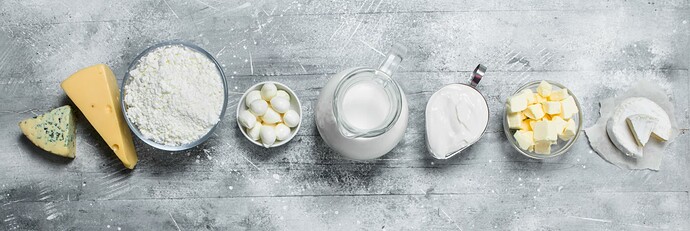Do you know that yogurt and kefir starters can also make cheese?
But how this is posible, you might ask. The reason is that the cheese is made in а way in which the focus is on the particular technique, not the cultures.
Main Ingredients:
You can make more than one type of cheese when using yoghurt and kefir starters. You should consider and control the following ingredients: milk, starter cultures, rennet, and salt using the following tools at home:
Tools: At least 5 L container (usually Multicookers having it), pot or sous pan, selection of spoons, knife measuring cup, colander, strainers, cheesecloth, cheese press and draining table; some cheeses might need cheese forms, kitchen towels, PH meter and thermometer. Most of that is used at home for making yogurt and kefir. Since you make homemade cheese for yourself, you might choose to make your cheese in whatever form and not follow the exact cheese shape of the protected cheese brands.
These tools can be made from any material, ceramic, metal, wood or plastic.
Processing of cheese:
The entire process described in short is as follows:
1. Choosing fresh milk(Critical task) >
2. Adding the starter cultures (freeze-dried or active culture); they provide consistent acidification, which reduces the growth of less tolerant to acid bacteria and converts the lactose into lactic acid which lowers the PH of the milk reducing the food source that can attract harmful bacteria >
2.1. If calcium chloride, lipase or certain flavourings or colourings** are to be added to the milk, they’re stirred in before the coagulant/rennet> Before the acidifications reach the chosen level,
3. Adding a coagulant to thicken the milk and form a thick mass of curds >
4. Cutting of the curds > After they’re cut, the
4.1. Curds often need to be cooked, or alternately be very, very gently stirred and then be allowed to rest while at a relatively higher temperature than they were kept at during coagulation. This process expulses whey from the curds, allowing them to shrink a bit and firm up, and keeps them from matting together. It is essential to establish the texture of the finished cheese. It also affects the acidity of the curds, which in turn impacts the flavour of the finished cheese, which will be bland with too little acid and bitter with too much. Alternatively, the curds may be washed if that’s necessary to create the cheese they’re destined to become, or they may be ready to drain. Washing curds reduces the lactose level of the finished cheese, making it less acidic, with a smooth texture and a mild flavour. (Gouda is an example of a washed curd cheese.) It is usually done by replacing some of the whey with water that’s either warmer or cooler than the whey (the temperature affects the moisture level of the curds and thus the final texture of the cheese) and alternating gentle stirring and resting to firm the curds. Or the curds may be set; that is, transferred after a cooking period to a lined colander and immersed in ice water to halt development >
5. Stirring or draining and/or salting of the curds for fresh cheese>
6. Shaping or pressing and/or salting of the curds for aged cheeses. There are two basic methods of adding salt to a cheese: dry salting, which can happen before or after pressing, after the curds have been drained, and brining, which typically occurs after the curds have been drained and shaped. Dry salting and brining are often used in combination>
7. Ripening/maturing and ageing.
Or in other words and shortly the steps are preparation(choosing and preparing milk), ripening milk(or adding cultures and acidification), coagulation( adding rennet or other coagulants) and curd finishing; straining and draining, shaping, and pressing; salting; drying; ageing(or cheese ripening) and storage.
Depending upon the cheese, these processes can overlap and even swap places in the order of cheesemaking steps.
